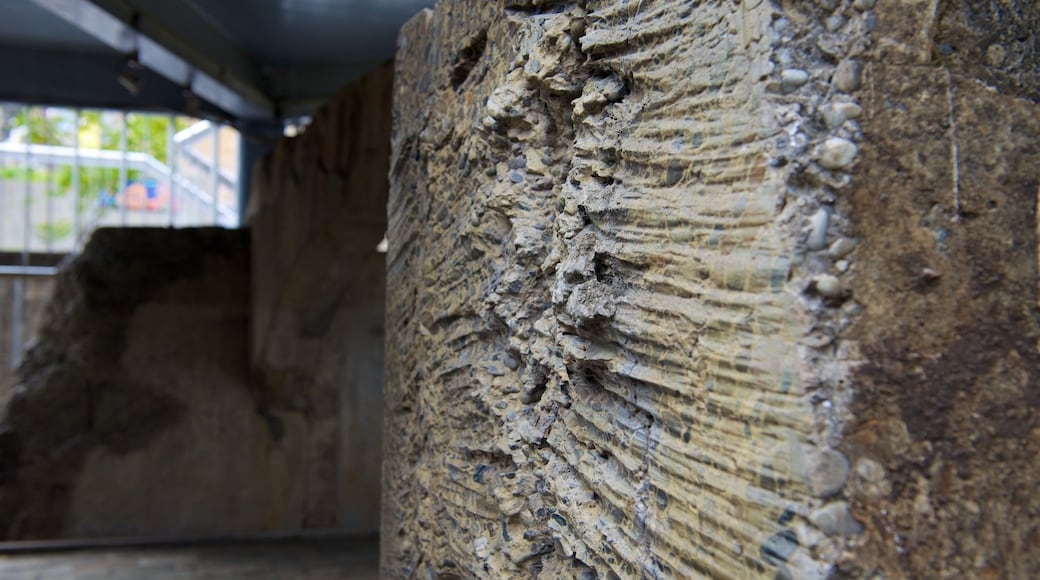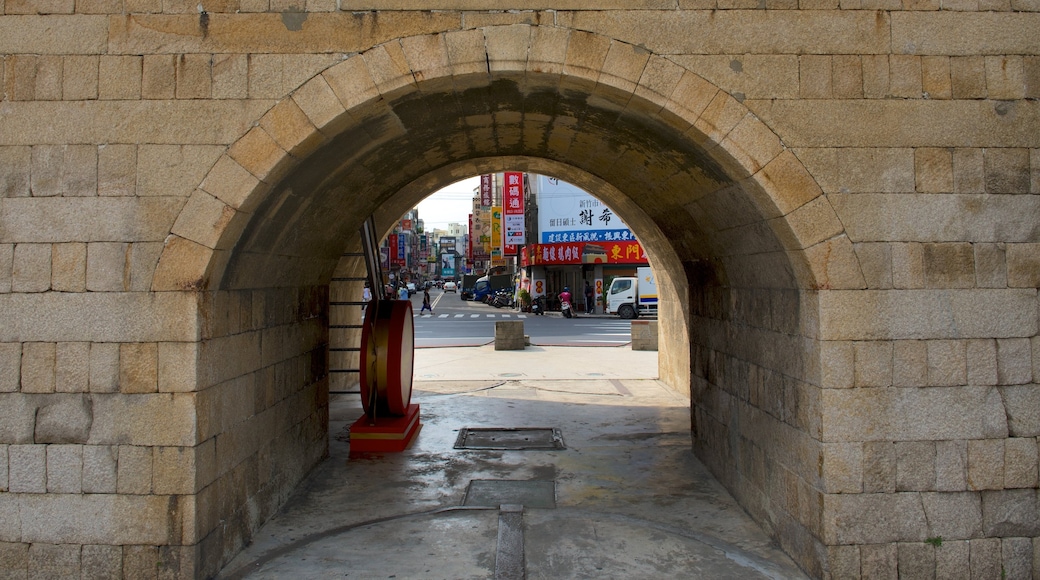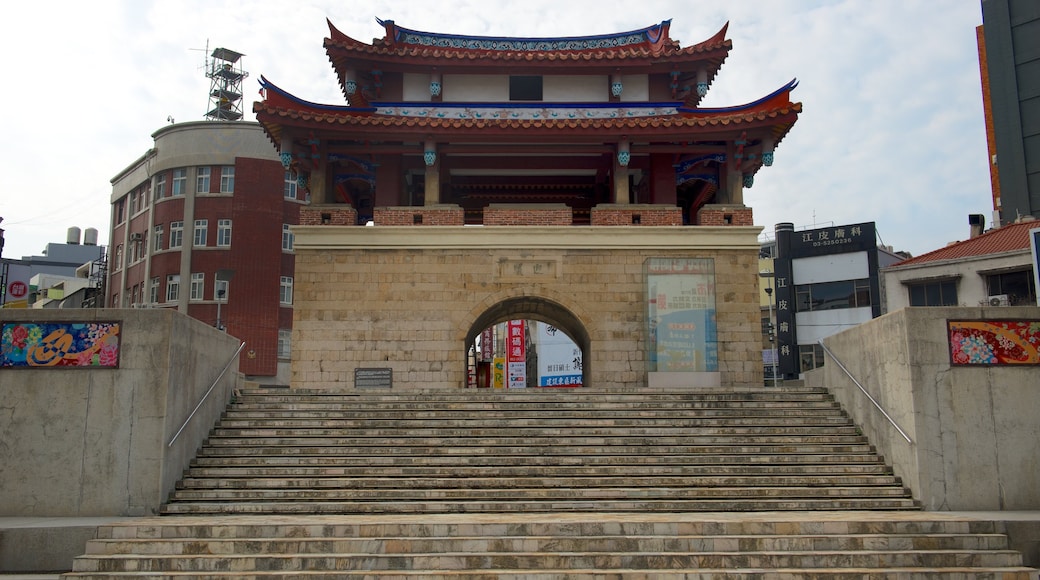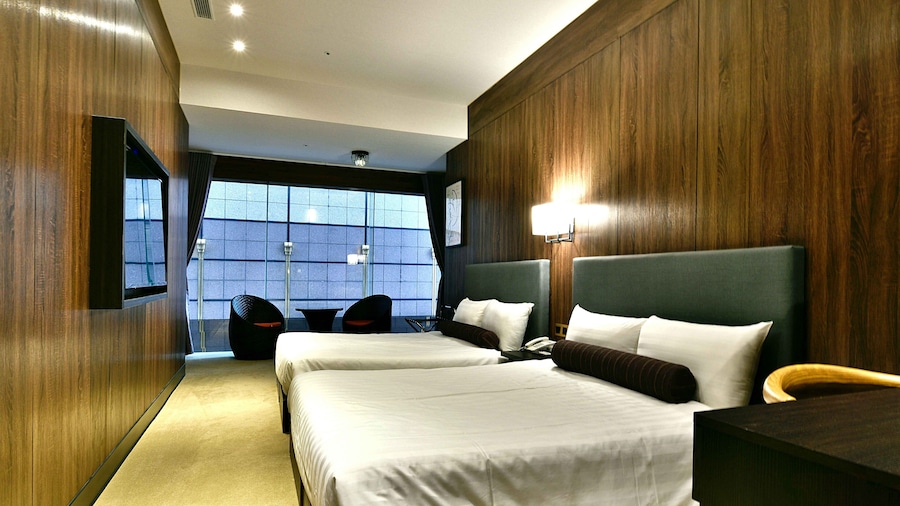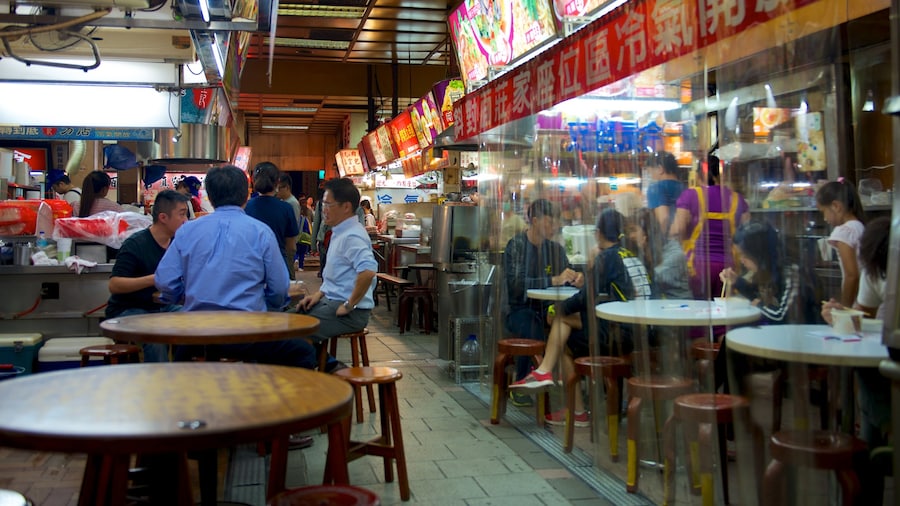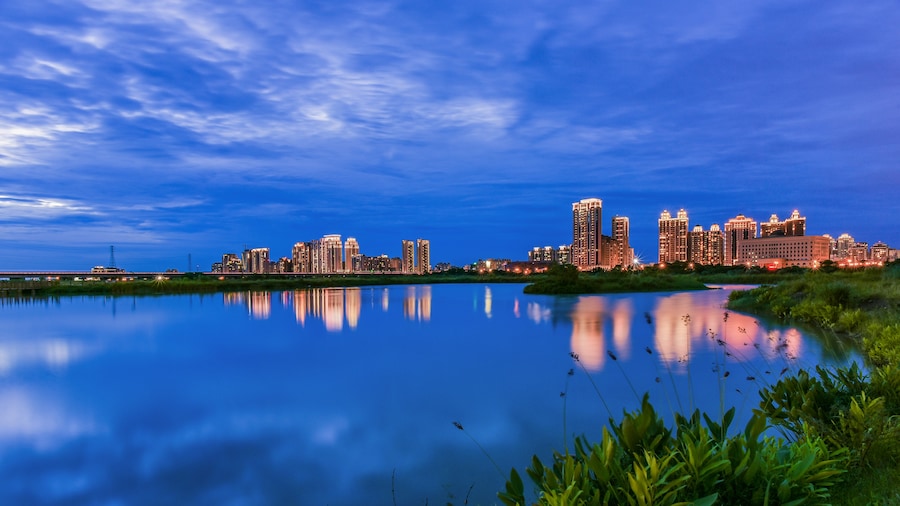Study the well-preserved remains of Hsinchu’s old city wall, an attractive 18th-century gate set in an elegant plaza.
The East Gate is nicknamed the Heart of Hsinchu and is one of the city’s most recognizable landmarks. It dates back to the early 18th century and is the only surviving gate of Hsinchu’s old defenses.
The first gate on this site was made of bamboo and constructed in 1733. Today’s brick and stone structure dates back to 1827 when it was one of four gates in a 1.7-mile (2.8-kilometre) long city wall. Most of the wall was torn down in 1902 during the Japanese occupation of Taiwan.
The gate is set in the middle of a busy four-lane roundabout and is accessed via a tunnel under the road. As you approach the monument, look at the stone slab that’s set to one side. It explains the history of the city wall. Study the gate’s design, which features 24 columns that support a double-eave red-tiled roof. Note the square loopholes, where soldiers would have once placed their weapons. Then stroll through the arched walkway which is made with Quanzhou white stone.
Sit on the steps in front of the gate and watch the traffic go by. This is also a good vantage point from which to watch performances that are occasionally held in the plaza that the gate stands on. While you are here, enjoy a short walk around the small public square.
The gate was once the main entry point to the city and is a good starting point for exploring Hsinchu. Follow the old city moat north from here and you’ll find streets lined with shops, cafés and restaurants. The banks of the old moat have been converted into an attractive park that links to the larger Qinshui Park.
The East Gate is located along Zhongzheng Road in Hsinchu’s North District, a short walk from Hsinchu Station. Come back in the evening when the gate is illuminated by a beautiful light display.

